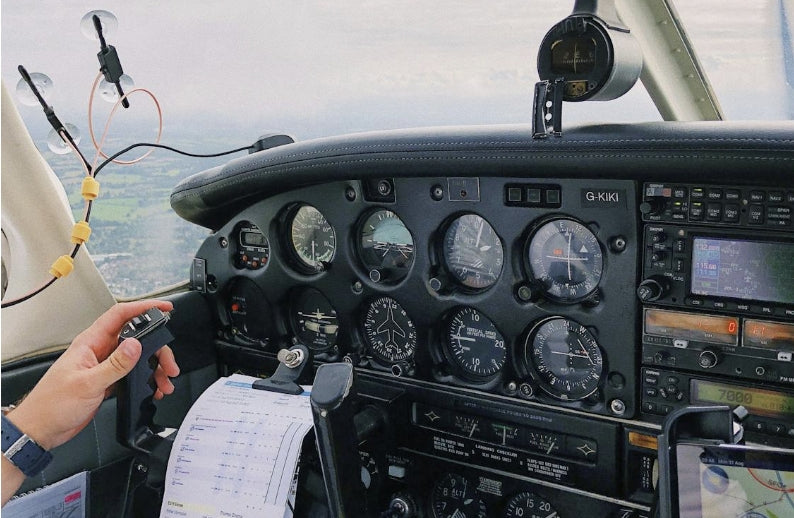
Kore Aviation - Anyone dreaming of flying wonders how long is pilot training. It depends on several factors, such as whether you train part time or full time, the type of license you want and the training pace. Private pilot licensing typically takes between three to six months, while commercial training can take twelve to twenty four months or more, depending on hours and ratings pursued.
We break down each phase of training for different pilot paths, show you flight hour requirements, and explain what to expect as you plan your journey.
1. Private Pilot Training Timeline
The Private Pilot License (PPL) is where most pilots start. The FAA requires a minimum of 40 flight hours, but most students log between 60 to 75 hours before completing training. This typically takes three to six months for regular training schedules.
If you follow a streamlined academy like Hillsboro Aero Academy, the total program including instrument or CFI can complete in around 16 to 18 months with full time training.
Discover More: How to Become a Pilot: Costs, TSA, and Hours of Flight Training
2. Instrument Rating Training Duration
After private training, pilots often pursue an Instrument Rating (IR) to fly under instrument flight rules. This step typically takes an additional four to six months, depending on flight availability and training consistency.
3. Commercial Pilot License Timeline
To earn a Commercial Pilot License (CPL), the FAA minimum is 250 total flight hours, including various flight experiences. Realistically, students finish this level within 12 to 24 months, especially if training part time. Full time accelerated programs can reduce this timeframe.
4. Airline Transport Pilot (ATP) Training
For those aiming to fly for airlines, you must log 1,500 flight hours to be eligible for an ATP certificate. Reaching this milestone typically takes multiple years. Accelerated programs, such as ATP Flight School, can help you reach the goal in two and a half years.
Training Summary Table
| License / Rating | Flight Hours Required | Typical Duration |
|---|---|---|
| Private Pilot License (PPL) | 40 (FAA min), 60–75 avg | 3–6 months |
| Instrument Rating (IR) | ~40 hours | 4–6 months (after PPL) |
| Commercial Pilot License | 250 total hours | 12–24 months |
| Airline Transport Pilot | 1,500 total hours | 2–3 years (full path) |
Also read: How Hard Is It to Become a Pilot?
Factors That Affect Training Duration
- Training schedule Whether part time or full time
- Weather and aircraft availability Interruptions add weeks or months
- Learning pace and readiness Consistent performance speeds progress
- Training program structure Part 141 schools often train faster than Part 61 programs
- Additional ratings Adding night or multi engine endorsements increases training time
Real World Example
In regional Australia, aspiring commercial helicopter pilots can complete training in as little as six months, compared to nine months for airplane training, much faster than traditional timelines.
Tips for a Faster Pilot Training Path
- Train consistently. Flying two to four times per week can keep knowledge fresh and reduce backtracking.
- Start ground school early. Learning regulations and procedures before flying helps your flight time be more efficient.
- Choose integrated programs if full time training fits your budget.
- Be aware of red flags like lawsuit reports claiming mismanagement at flight academies. A recent case alleges some programs over-enrolled students and reduced safety standards.
- Stay focused and prepared. Use online tools, mock exams, and planning resources to avoid unnecessary delays.
Read More: Ground School vs. Flight School: What’s the Difference?
FAQs: How Long Is Pilot Training?
-
Can I complete training faster if full time?
Yes. Full time students flying several times a week often earn their PPL in under six months and CPL in under two years. -
Do awards or cadet programs speed the path?
Cadet programs often combine ground school and flight training into intensive schedules that shorten completion time. -
Is simulator time included?
Yes. Approved flight simulator time can count towards flight hours and reduce your cost and training delays. -
Can I train part time and still finish quickly?
Part time training extends the timeline. Full time dedication reduces total time. Expect one year for PPL and two years for CPL if flying consistently. -
Why do most students need more than the FAA minimum hours?
FAA minimums assume high aptitude and perfect schedules. Realistically additional hours are needed to achieve safety and proficiency. -
Can a headset help finish faster?
Absolutely. A good headset reduces distractions and fatigue allowing you to focus on your instructor and improve faster. - What slows training timelines? Weather, inconsistent lesson scheduling, instructor turnover, aircraft maintenance delays, or personal time constraints.
- Do integrated programs save time?Yes. Integrated programs consolidate ground and flight training with structured syllabi. Many complete PPL through CFI in about 16 months.
-
Can I get a PPL in 3 months?
Yes if you train full time under ideal weather and scheduling. Many students can do this.
Final Thoughts
So, how long is pilot training depends on your dedication, schedule and licensing goal. Expect between three to six months for private pilot and one to two years for commercial certification. The path to airline pilot takes longer—but with the right planning and tools, your journey to the sky is achievable.
🎧 Ready for clear communication on your training flights? Explore Kore Aviation’s student pilot headsets and affordable solution that enhances focus and comfort with every lesson.
